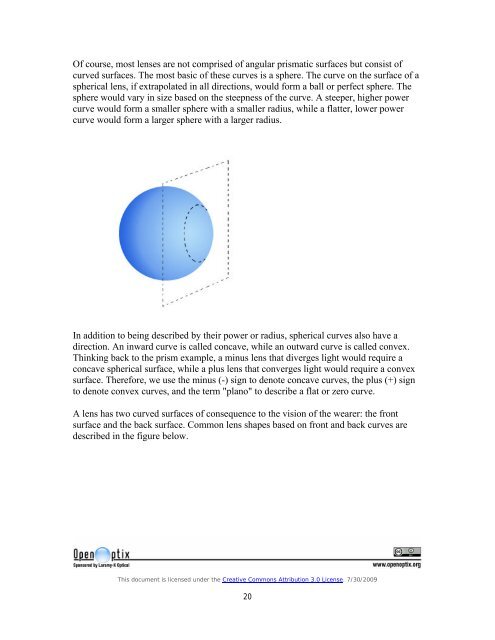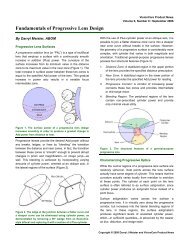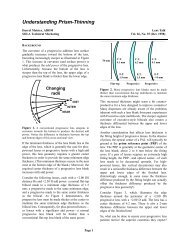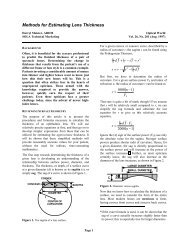OpenOptix ABO Study Guide - Laramy-K Optical
OpenOptix ABO Study Guide - Laramy-K Optical
OpenOptix ABO Study Guide - Laramy-K Optical
You also want an ePaper? Increase the reach of your titles
YUMPU automatically turns print PDFs into web optimized ePapers that Google loves.
Of course, most lenses are not comprised of angular prismatic surfaces but consist of<br />
curved surfaces. The most basic of these curves is a sphere. The curve on the surface of a<br />
spherical lens, if extrapolated in all directions, would form a ball or perfect sphere. The<br />
sphere would vary in size based on the steepness of the curve. A steeper, higher power<br />
curve would form a smaller sphere with a smaller radius, while a flatter, lower power<br />
curve would form a larger sphere with a larger radius.<br />
In addition to being described by their power or radius, spherical curves also have a<br />
direction. An inward curve is called concave, while an outward curve is called convex.<br />
Thinking back to the prism example, a minus lens that diverges light would require a<br />
concave spherical surface, while a plus lens that converges light would require a convex<br />
surface. Therefore, we use the minus (-) sign to denote concave curves, the plus (+) sign<br />
to denote convex curves, and the term "plano" to describe a flat or zero curve.<br />
A lens has two curved surfaces of consequence to the vision of the wearer: the front<br />
surface and the back surface. Common lens shapes based on front and back curves are<br />
described in the figure below.<br />
This document is licensed under the Creative Commons Attribution 3.0 License. 7/30/2009<br />
20









